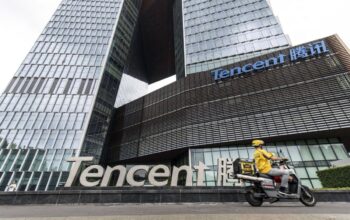Uzone.id – The fast-paced growth of technology is driving shifts in market demands, reshaping the landscape across various sectors. As a result, several industries are projected to see significant growth over the next 5 to 10 years.
From AI-powered solutions and green energy to advanced healthcare and e-commerce, these sectors are adapting to evolving consumer needs and technological advancements. This transformation is setting the stage for a new era of opportunities and innovation in the coming years.
The following are some industrial sectors that are predicted to grow significantly, including:
Health
The healthcare industry has the potential to grow rapidly in the next few years. The high demand for solutions in the health system, such as medical diagnosis, patient data management, and telemedicine can be the reason why the health sector industry will continue to grow significantly in the future.
As reported by Forbes, the Bureau of Labor Statistics (BLS), has projected that five of the twenty fastest-growing industries between 2020 and 2030 will be in the healthcare sector. Because this industry continues to experience double-digit growth with an expected growth rate of 12 percent.
Not only that, according to the Global Healthcare Predictive Analytics Market report by The Business Research Company, the healthcare industry is expected to grow at a CAGR of nearly 25 percent to reach USD$30 billion by 2026.
“Healthcare facilities are increasingly adopting healthcare predictive analytics, especially in areas such as clinical trials, administration, and operations management, to provide the best care,” said The Business Research Company.
Education
The integration of education with the adoption of technology has resulted in increasing demand for counselors, learning management system administrators, web developers, and online courses, massively triggering rapid growth in this sector of the industry.
In 2019, the digital-based education market was worth around USD$12.6 billion and is expected to increase to USD$136 billion by 2030 with a CAGR of 25.1 percent according to the Digital Education Market 2030 report by Fatpos Global.
E-commerce
The rise of retail companies such as Shopee, Tokopedia, Lazada, and online shopping platforms that make it easier for consumers to make transactions has now spread to services, digital goods, and shipping.
According to a report from market insights by Statista, the e-commerce market sector industry is expected to experience annual growth of 9.49 percent until 2029, although almost all industries will experience growth. Not only that, e-commerce sales contribute more than 15 percent of all global retail sales.
Information and Communication Technology
By looking at the phenomenon of increasing demand for advanced technologies, such as artificial intelligence (AI), Internet of Things (IoT), and Blockchain today, we can see that this industrial sector will continue to grow rapidly in the next few years.
For artificial intelligence (AI) itself, private investment in several generative AI projects has increased eightfold in recent years. In 2023, AI reached more than USD$25 billion.
Entertainment
With the increasing interest in digital content, creative industries, streaming, and social media, the entertainment sector is expected to continue to grow. The high demand for virtual reality games is also driving significant growth in the industry.
Looking at data from Expert Market Research in the Global Virtual Reality Games Market Report and Forecast, the sector’s growth has a market value of USD$20.6 billion in 2021. This value is believed to continue to grow at a CAGR of 29.8 percent in the interim period from 2022 to 2027 and reach USD$100.23 billion by the end of 2027.
“This market is gaining popularity in several developing regions such as Brazil, India, Mexico, and other countries due to increasing consumer income coupled with easy access to VR-enabled games,” according to the report.
Wrap It!
In essence, the growth of a sector in an industry is greatly influenced by demand from the public or consumers who are increasingly smart and digitally connected. The presence of a company strategy in dealing with market dynamics and technological advances is a major pillar for continuing to exist in this digital era.
















